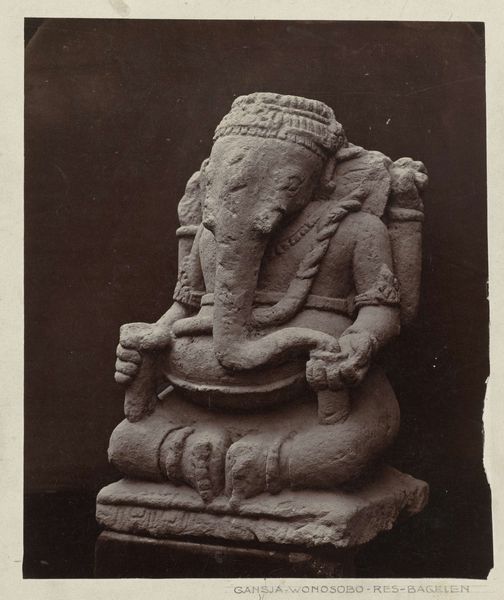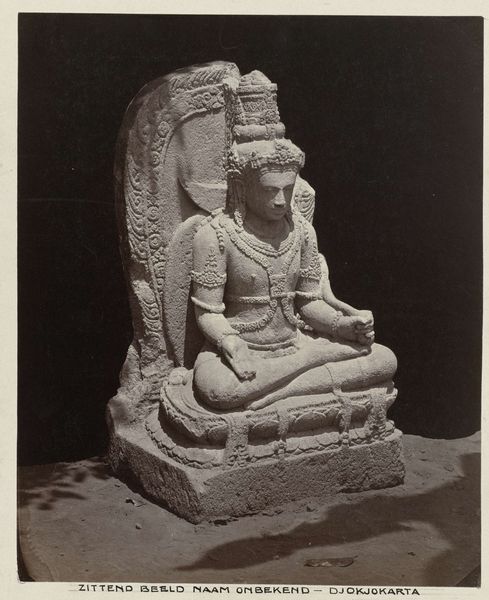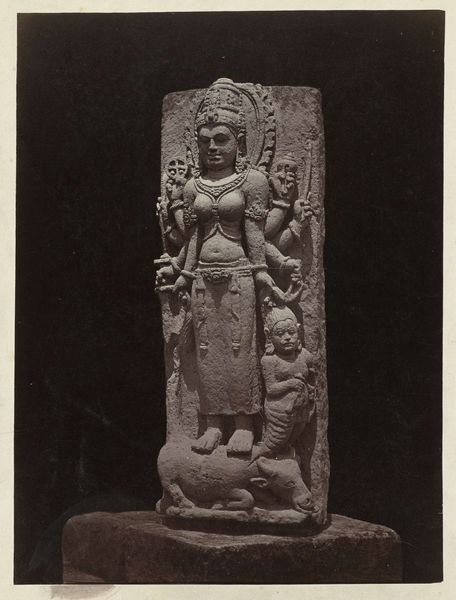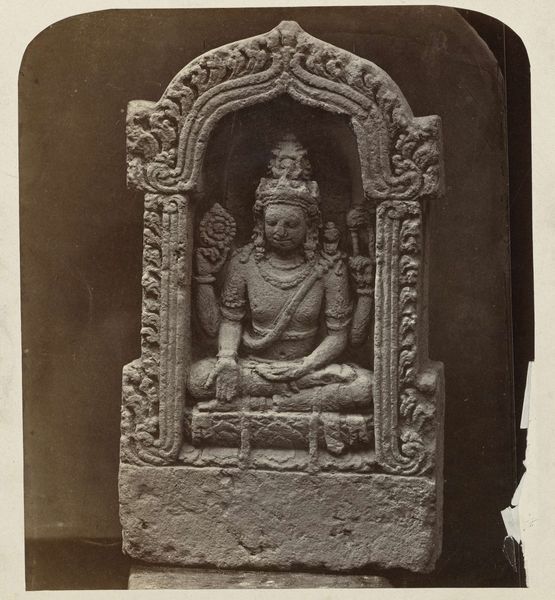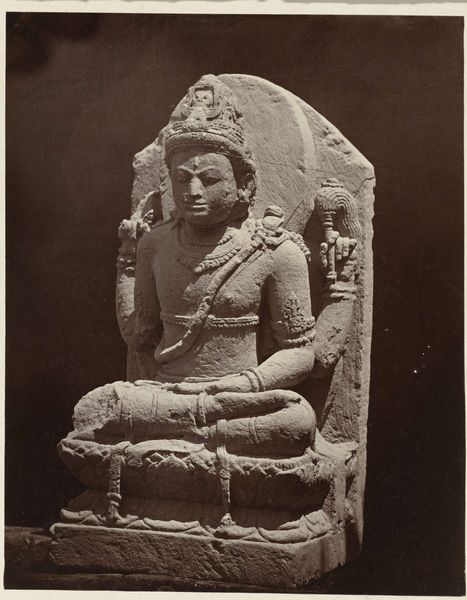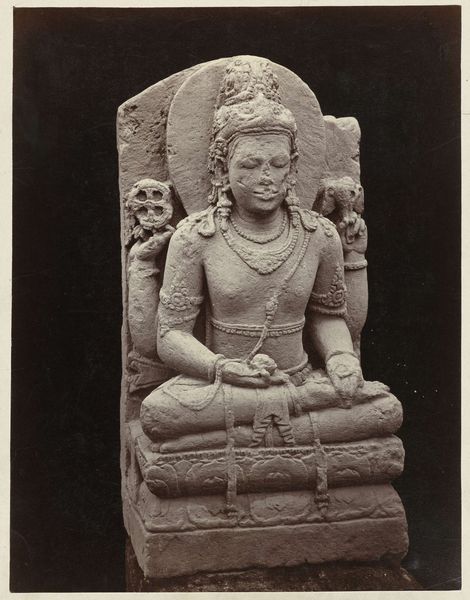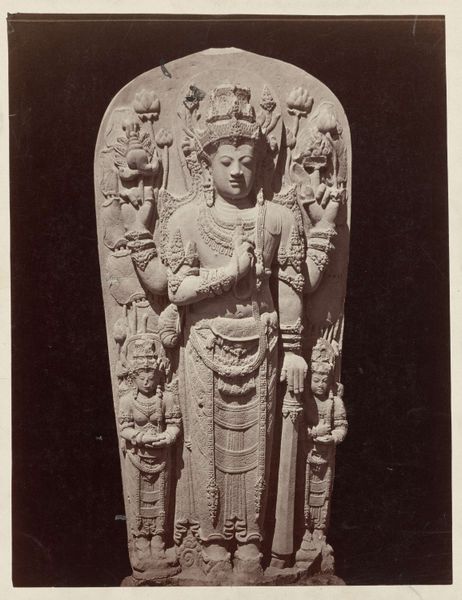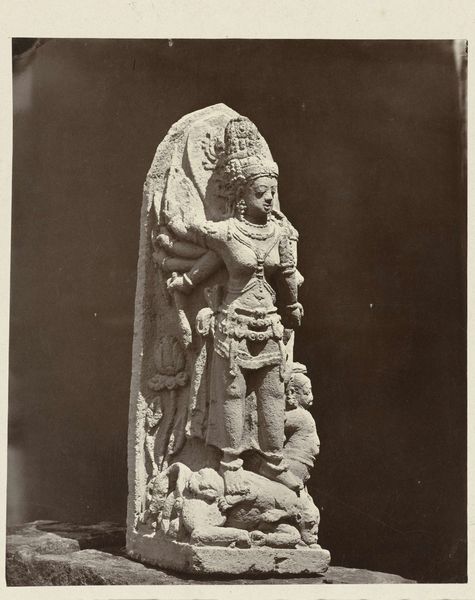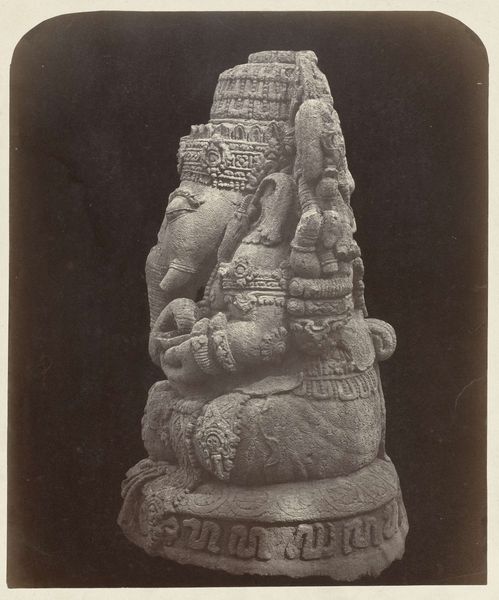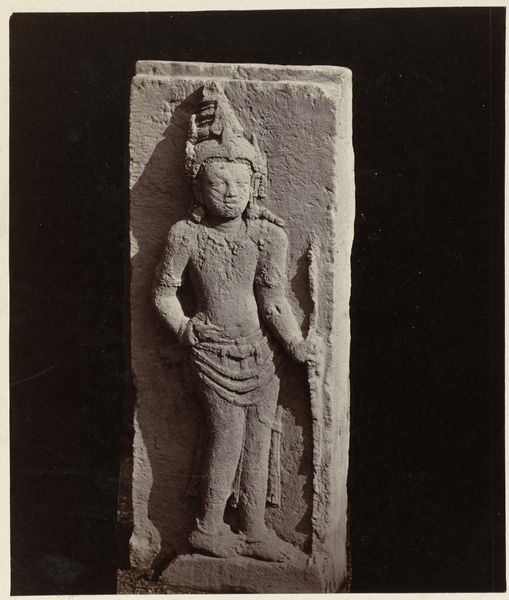
#
toned paper
#
sculpture
#
charcoal drawing
#
sculptural image
#
charcoal art
#
unrealistic statue
#
sculpting
#
charcoal
#
columned text
#
statue
Dimensions: height 260 mm, width 210 mm
Copyright: Rijks Museum: Open Domain
Curator: Here we have Isidore Kinsbergen's photograph, titled "Beeld van een zittende vierarmige Vishnu," created between 1864 and 1868. Editor: It has a certain gravitas, doesn't it? That texture, almost crumbly, gives it a weight that seems to settle in your bones. It looks to be rendered using charcoal and toned paper, doesn’t it? Curator: Indeed. What intrigues me is considering Kinsbergen's role in visually documenting Indonesian antiquities at that time. Think of the process – setting up the equipment, managing the light. What resources did this photographer, in this colonial context, have at his disposal? Editor: I am struck by the repetition of forms. The multiple arms clearly signify Vishnu’s power, his ability to act in different realms. But it goes deeper; look at the symmetry, and the way it draws the eye to that serene facial expression. What emotions were conveyed, what messages encoded? Curator: Considering its possible function as documentation for archaeological records, how did Kinsbergen navigate the line between scientific recording and potential romanticization? Editor: But aren't records also interpretations? Kinsbergen's photographic gaze, trained through a Western lens, captured a very specific representation, a visual codification, really. The photograph in itself becomes an artifact! Curator: Precisely. Thinking about access – who would have viewed these images? Was this for scholarly research, colonial administration, or a wider public fascinated by the “exotic” East? Its distribution undoubtedly influenced the perception and commodification of Indonesian cultural heritage. Editor: Absolutely, and those perceptions get absorbed. I am left considering how the symbolism here speaks to continuity – to the enduring presence of these iconographic motifs within different artistic and cultural forms over time. Curator: Reflecting on the materials, I find myself contemplating the labor involved: the sourcing of materials for paper production and the craftsmanship that transformed charcoal into a detailed image for scientific visual studies. Editor: And I appreciate you bringing me back to the tactile and concrete. This has brought some focus on cultural symbolism. Curator: Agreed. There’s so much layering happening, materially and contextually.
Comments
No comments
Be the first to comment and join the conversation on the ultimate creative platform.
